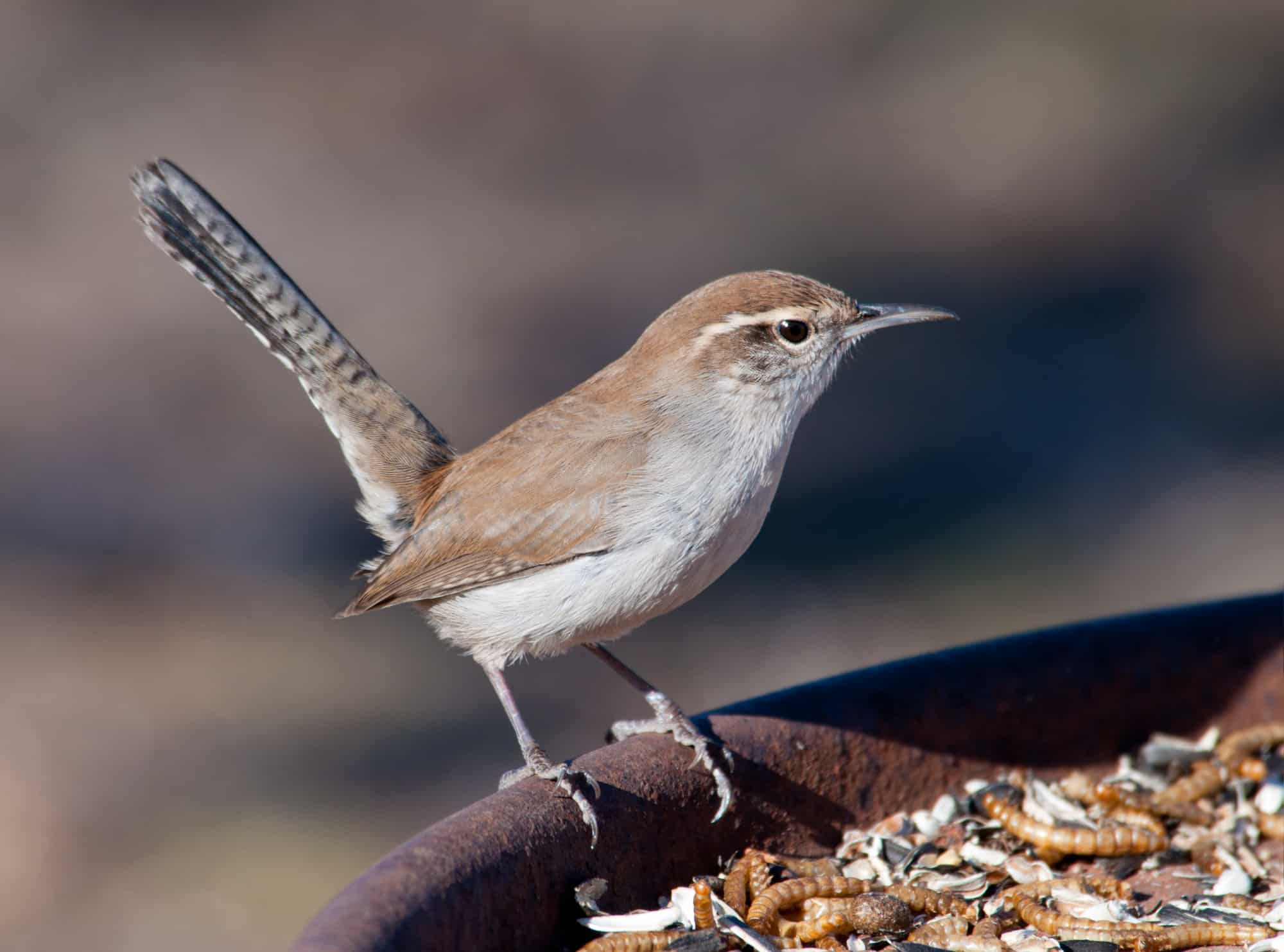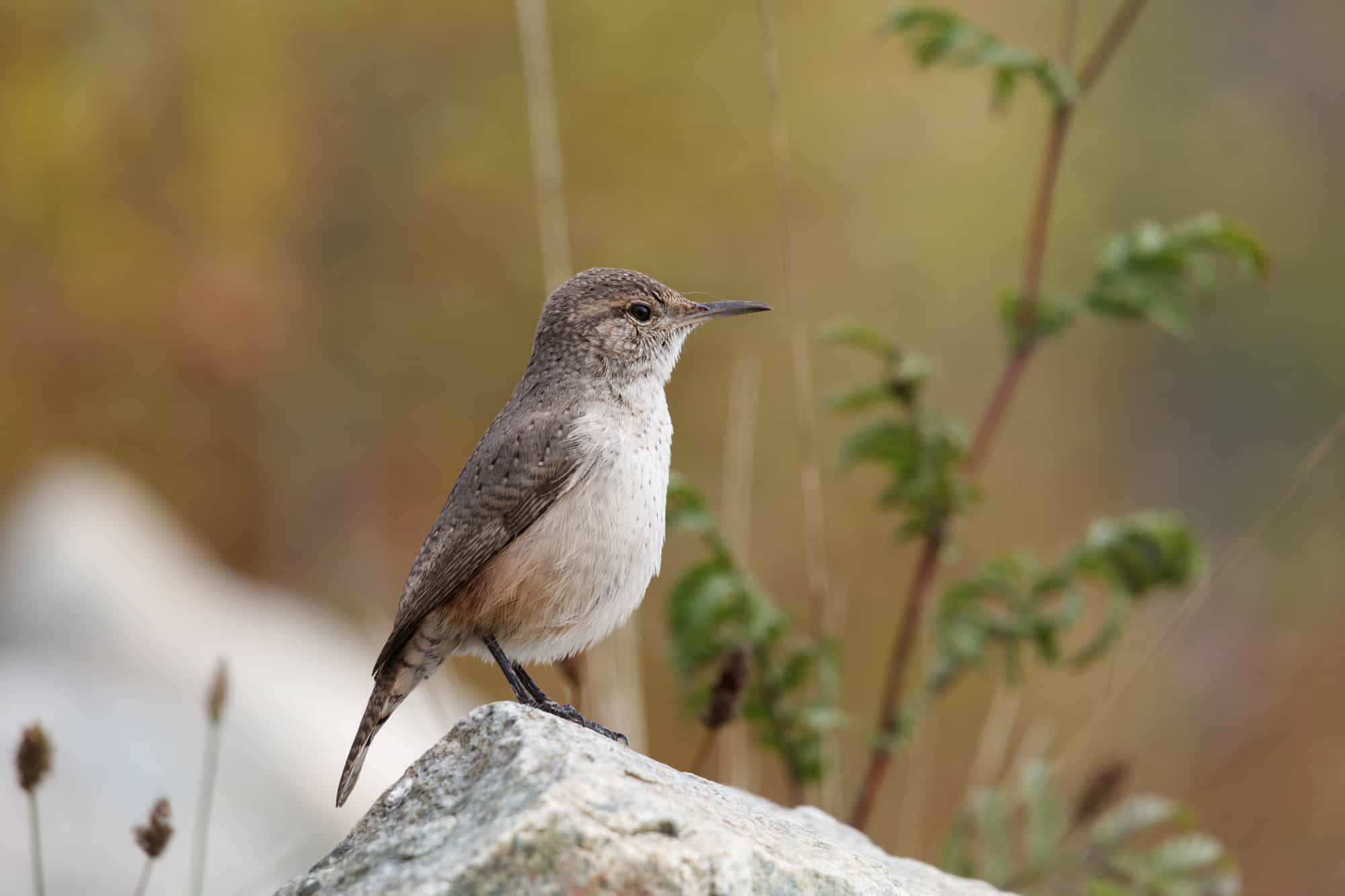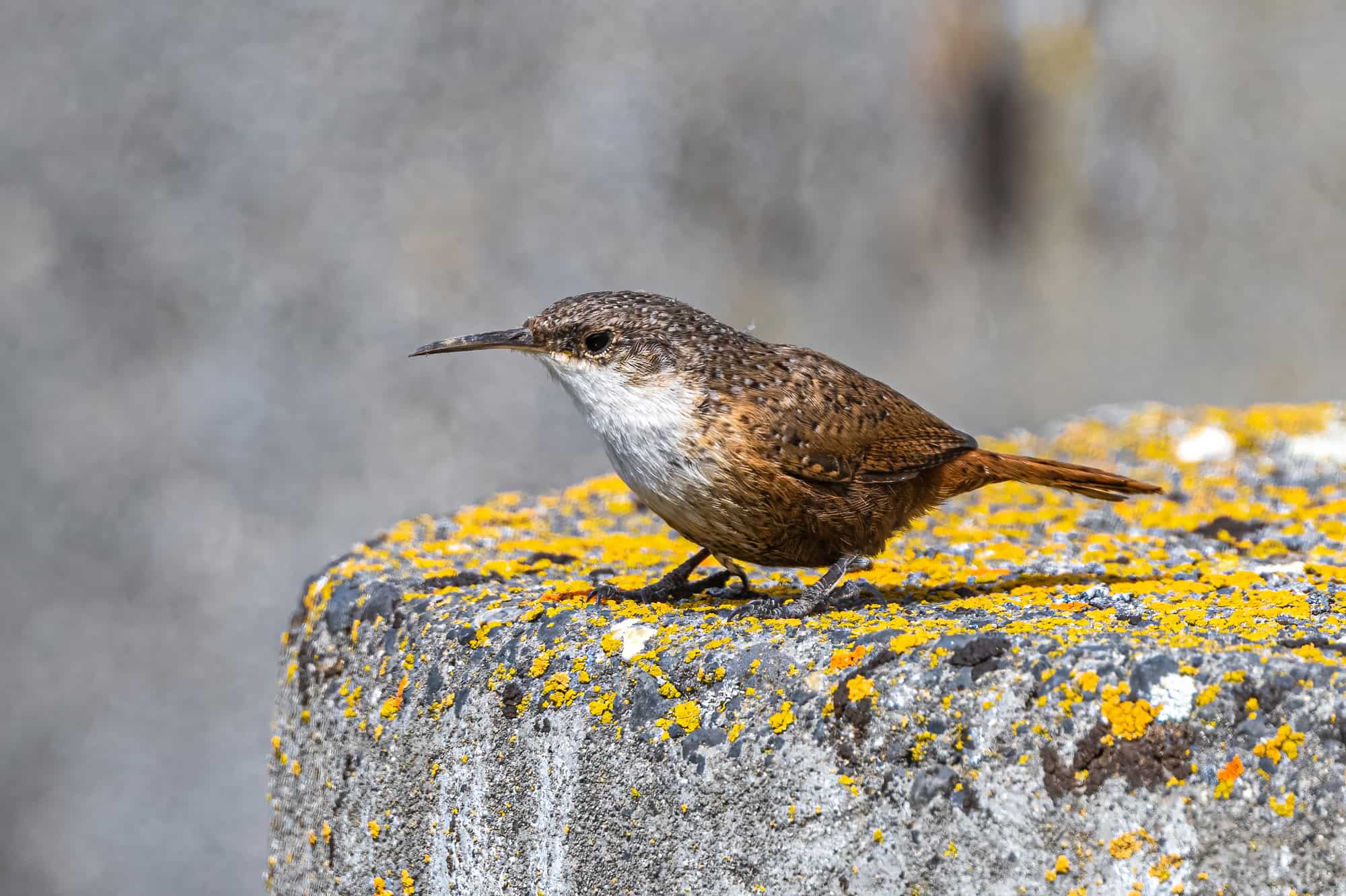Wrens. Tiny songbirds with big personalities. One minute they’re scuttling through the undergrowth, quiet as a mouse, the next they’re standing tall, head and tail cocked, belting out life-affirming, distinctive songs that might make your hairs stand on end.
An interesting feature of the wren family is how the species are divided in their geographical range. Most wrens are found almost exclusively in the western or eastern states, but rarely in both.
A central state like Kansas, therefore, represents a meeting point between eastern and western species, meaning a wealth of wren species can be found here.
Nine of the eleven native North American wrens can be found in the Sunflower State, but only two of them are common birds. The rarest two are so seldom seen that they’re considered accidental.
But the plentiful rare wren species in Kansas only makes things more interesting for the birdwatcher. Seeing a new species for the first time in an unexpected location is always a thrill, and your sighting may even contribute useful data to birding records.
Apart from being among the most charming of all songbirds, wrens are also great fun to observe close to home. Leaving an overgrown corner of the garden is a great way to attract wrens, and several species will gladly accept suitable birdhouses to nest in.
But which are the nine types of wren that can be found in Kansas, and which of them are the most frequently seen? Let’s find out.
Wrens in Kansas, Starting With the Most Commonly Seen
Carolina Wren

- Scientific Name: Thryothorus ludovicianus
- Length: 4.7-5.5 in (12-14 cm)
- Weight: 0.6-0.8 oz (18-22 g)
- Wingspan: 9 in (23 cm)
Carolina wrens are the most commonly spotted wren in Kansas during the summer months, and since they don’t migrate, they’re the most frequently reported during the winter, too.
But because Kansas lies at the Western edge of this bird’s range, you’ll only regularly find Carolina wrens in the milder, eastern half of the state. Some sources report that their range is extending westwards, perhaps due to climate change.
Carolina wrens are great fun to have around in the backyard and are one of the few songbirds in Kansas to sing during the winter. Listen out for their rolling chant of repetitive, musical phrases to help locate and identify them.
Carolina wrens mate for life and you can increase the chances of them nesting in your garden by offering them a suitable birdhouse. They may also visit platform feeders and tube feeders during the cold Kansas winters.
House Wren

- Scientific Name: Troglodytes aedon
- Length: 4.3-5.1 in (11-13 cm)
- Weight: 0.3-0.4 oz (10-12 g)
- Wingspan: 5.9 in (15 cm)
House wrens are the only other common wren in Kansas, and unlike Carolina wrens, are only present here during the warmer months. Some impatient individuals may arrive here as early as the start of April.
House wrens are easily differentiated from Carolina wrens because they’re much smaller, and have a more uniform brown or gray color in contrast to the Carolina wren’s elaborate, ornate markings.
House wrens have an impressive voice for their tiny size. Listen out for their noisy, high-pitched warbles coming from the tangles of overgrown vegetation that they call home.
Although house wrens don’t visit backyard bird feeders, you can still attract them to your garden by offering them a gourd birdhouse, and by avoiding the use of pesticides that decimate the insects that they rely on for food.
Marsh Wren

- Scientific Name: Cistothorus palustris
- Length: 3.9-5.5 in (10-14 cm)
- Weight: 0.3-0.5 oz (9-14 g)
- Wingspan: 5.9 in (15 cm)
Unlike our first two wrens, you might need to make a dedicated trip to spot the elusive marsh wren. True to their name, marsh wrens are wetland birds and are almost never seen anywhere there’s no standing water.
In Kansas, these tiny birds have just two main territories – a small population that remains year-round in the center of the state, and a winter population in the southwest. Take a good pair of binoculars and be prepared to wait – they’re only spotted by less than one in a hundred bird watchers here!
It’s during the migratory season that you have better chances of seeing marsh wrens elsewhere. In the spring and fall migrations, they’re widely reported across Kansas.
Marsh wrens are famed for their feisty behavior and are not afraid to battle with other wrens and larger birds for their territories. In spring and early summer, they’ll sometimes sing right through the night with their boisterous, buzzy songs!
Sedge Wren

- Scientific Name: Cistothorus stellaris
- Length: 3.9-4.7 in (10-12 cm)
- Weight: 0.3oz (7-10 g)
- Wingspan: 4.7-5.5 in (12-14 cm)
Sedge wrens are one of the rarest wrens in the USA and are only typically found in the northeast corner of Kansas during the warmer months. In the winter they may very occasionally be spotted in the state’s southern fringes, too.
The sedge wren is a bit like a smaller and more timid version of the marsh wren. Although they are closely related, the sedge wren has a shorter tail and a lighter coloration than their larger relative.
Aside from appearances, sedge wrens also usually inhabit slightly drier terrain than marsh wrens. In Kansas, the different breeding territories of these birds make it easier to distinguish them.
Still, the secretive nature and deft camouflage of the sedge wren make them difficult to spot. Instead, listen out for their repetitive chatter that’s often broadcast from atop sedge grass or willow branches in their damp abodes.
Winter Wren

- Scientific Name: Troglodytes hiemalis
- Length: 3.1-4.7 in (8-12 cm)
- Weight: 0.3-0.4 oz (8-12 g)
- Wingspan: 4.7-6.3 in (12-16 cm)
Among this family of tiny birds, winter wrens share the prestigious title of being the smallest of them all. Almost identical in proportions to the Pacific wren, the two species often weigh less than two credit cards!
As with Bewick’s wren, Kansas lies on the western edge of the winter wren’s range. That means they can only be considered a resident species in the southeastern parts during the winter months. They’re also occasionally seen elsewhere during migration.
Damp woods and shady thickets are the primary habitats for winter wrens, whose Latin name ‘Troglodytes’ means ‘hole-dweller’. Their hole-dwelling tendencies come to light in winter when large numbers of them will sometimes congregate in a single birdhouse!
Winter wrens have a particularly impressive voice – a high-pitched, complex warble sung with formidable zeal and gusto!
Bewick’s Wren

- Scientific Name: Thryomanes bewickii
- Length: 5.1 in (13 cm)
- Weight: 0.3-0.4 oz (8-12 g)
- Wingspan: 7 in (17.8cm)
At the beginning of the 20th century, Bewick’s wren was a common backyard bird in the Central States but is now reported by less than 1 in 500 birdwatchers in Kansas.
The demise of Bewick’s wren in the east still remains a mystery to ornithologists, some of whom blame the aggressive house wren for their decline. Others cite habitat loss as the critical factor. Whatever the cause, it’s surely sad to have lost such a beautiful and elegant species of wren from its native territories.
Bewick’s wren can be identified by its white-gray underside, long white eyebrows, and a pretty long tail with white corners.
It can be challenging to learn Bewick’s wren’s buzzy song because it varies so much between regions. Luckily their unique appearance makes them relatively easy to recognize.
Rock Wren

- Scientific Name: Salpinctes obsoletus
- Length: 4.9-5.9 in (12.5-15 cm)
- Weight: 0.5-0.6 oz (15-18 g)
- Wingspan: 8.7-9.4 in (22-24 cm)
Another unique-looking wren species is the rock wren. With their long bill, large size, and pale colors, the rock wren is difficult to mistake for any other.
More common further west, rock wrens are not a frequent sight in The Midwest but do breed regularly in the western half of Kansas. In the southwestern corner of the state, it’s even possible to see these slender birds year-round.
If you were lucky enough to spot a rock wren in Kansas, it’d likely be in a hilly, rocky habitat. Just as marsh wrens remain faithful to their wetland homes, rock wrens are rarely found anywhere without rocky terrain.
During the breeding season, the male rock wren adorns his nest site with a sort of ‘front porch’ of jumbled stones. These can weigh more than 3 lb in total, so moving them there is a remarkable feat for such a small bird!
Pacific Wren

- Scientific Name: Troglodytes pacificus
- Length: 3.1-4.7 in (8-12 cm)
- Weight: 0.3-0.4 oz (8-12 g)
- Wingspan: 4.7-6.3 in (12-16 cm)
Until a scientific study in 2008 revealed breeding isolation, Pacific wrens were considered to be the same species as the winter wren. Because winter wrens breed in the east, and Pacific wrens in the west, the two groups have evolved into distinct species over time.
There are few states, therefore, where both of these tiny birds can be found, but Kansas is one of the few. Pacific wrens are by far the rarer of the two here and are only considered accidental in The Sunflower State.
Like their cousins, they like to spend most of their time in shady woods and thickets and may startle passers-by with their booming voices.
While their dark brown color and round shape are similar to that of the winter wren, their song tends to be a bit faster and less musical than their eastern cousins, which is a good way to distinguish them.
Canyon Wren

- Scientific Name: Catherpes mexicanus
- Length: 4.5-6.1 in (11.4-15.4 cm)
- Weight: 0.3-0.7 oz (9.9-18.3 g)
- Wingspan: 7.1-7.9 in (18-20 cm)
Although the Pacific wren is a very rare species in Kansas, there is another wren that is even rarer.
The Canyon wren of the western states tends to be fairly sedentary and rarely ventures this far east. They’re only seen in Southwestern Kansas once in a blue moon, a noteworthy event in the birding world.
The good news is that if you see a Canyon wren, you’re unlikely to mistake it for any other bird. Their extremely long bill and white chest make them a singular-looking species, and their cascading song is not only unique but also a therapeutic balm for the soul.
If you do manage to spot or hear Canyon wrens in Kansas, try to get a photo or audio recording and report it to a local bird-watching authority such as Kansas Ornithological Society.
Conclusion
Nine of the eleven Native American wrens can be found in Kansas, but several of them are rarely spotted here.
While Carolina wrens and house wrens can be seen every day during the warmer months, Rock wrens and Bewick’s wrens are only seen by a lucky few birdwatchers.
Other than wrens, there’s a whole host of beautiful and fascinating feathered friends to enjoy in Kansas. We’ve compiled a list of the very best of them in our Birder’s Guide to The Sunflower State.

